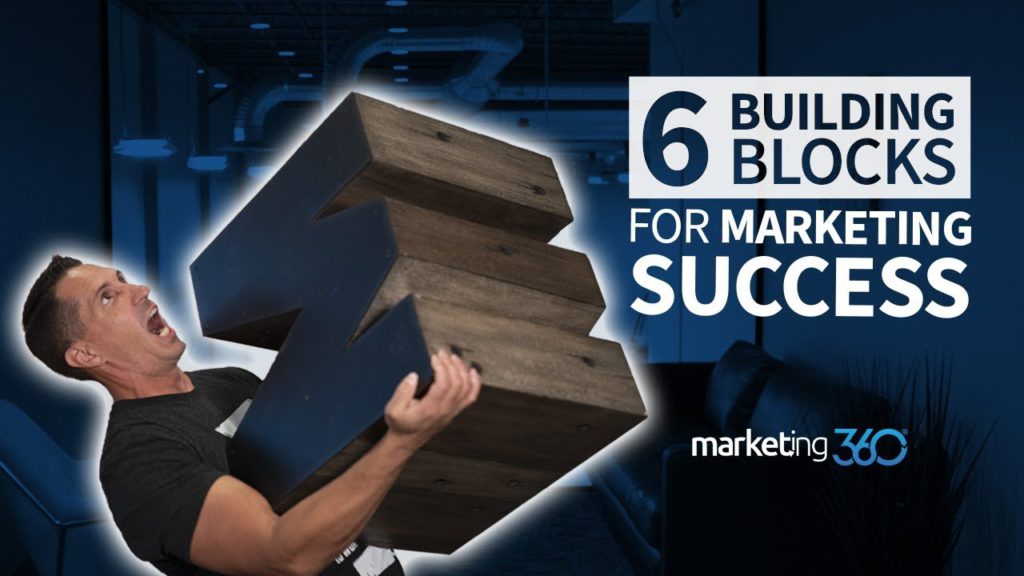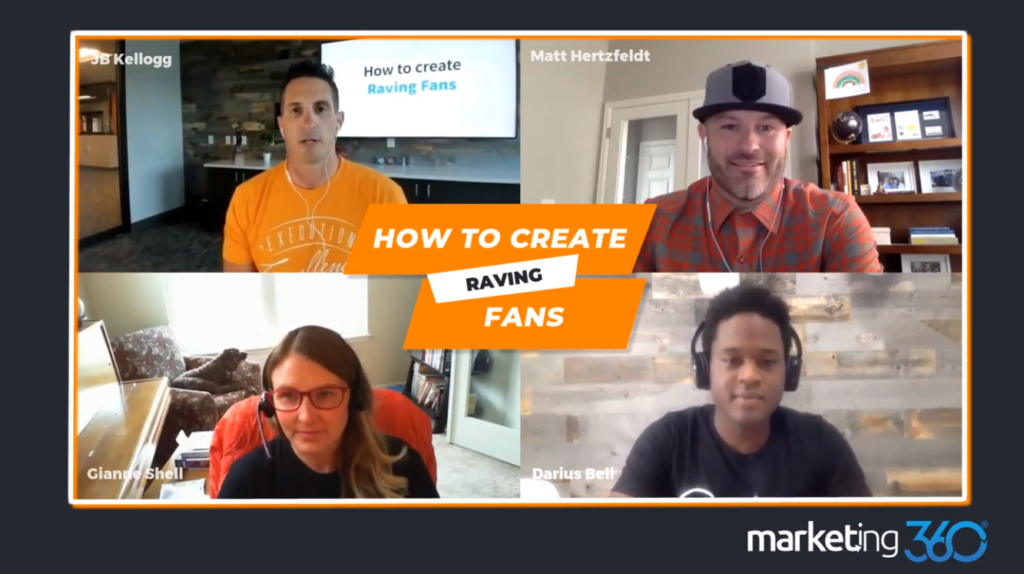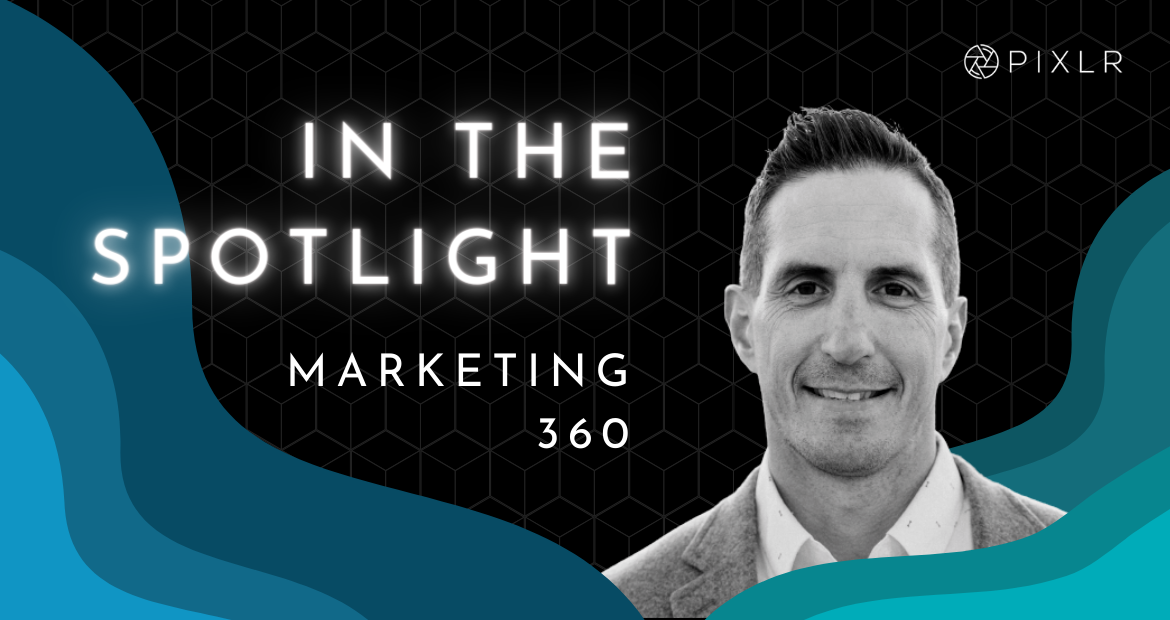In The Spotlight | Marketing 360
“Being different is better than being better.“
Being known as one of the top marketing channels on YouTube, Marketing 360 is a platform designed specifically to help small businesses and start-ups grow. Their content includes tips and tricks to boost sales, brand marketing and many more. If you are an aspiring entrepreneur, then this channel would be a perfect fit for you!
In this week’s Pixlr Spotlight, JB Kellogg talks about his journey on co-founding Madwire (which then sparked the production of Marketing 360), his strategies on maintaining audience engagement, and his advice to upcoming creators.

Tell us about yourself and your business.
Hi, I’m JB Kellogg and I’m the Co-Founder & Co-CEO of Madwire®. I co-founded Madwire with my Dad when I was 28 years old and grew it from just the two of us in a tiny little office to over five hundred people and a hundred million dollars in annual revenue in under 10 years. I guess that’s pretty rare to achieve, so they call companies like that “rocketship companies”.
For those of you that don’t know, Madwire’s mission is to help small businesses grow and their local communities glow. Madwire does this by enabling SMBs and entrepreneurs to manage and grow their brand from a singular platform called Marketing 360®.
How did you get started in your industry?
I played college football at the University of Western New Mexico. It was like a full-time job, so after my senior season when football was over and I still had one semester left, I had a lot of time on my hands which I was not accustomed to. I didn’t like it. I prefer to be busy. So I decided to walk down to a local travel magazine company a few blocks off campus called Zia Publishing. I knew I had a talent for design and marketing (I self taught myself digital design and went to school for marketing), so I walked in and asked if I could intern there my final semester. They said they didn’t have a need for any design or marketing but they did need a new website, and they asked me if I knew how to design and build a website. This was early 2005 and website design and development was still pretty new. I told them no, but if they gave me a desk, computer, and a couple of months, I’d figure it out. So they did.
Over the next eight weeks, I learned everything I could about website design and development. I designed and built the website two or three times over before I felt confident enough to show the owner, Terry. When I showed her the website, she paused and said, “This is the best website I’ve ever seen. Not only is it beautiful, but it achieves all our needs and goals.” I knew at that moment I had a talent not many people had at the time. I told my Dad I thought there was a business opportunity. He agreed, but the industry was mostly freelance at the time and he was running a successful brokerage company called Traders Network. He wanted me to come work with him and test some of the digital marketing and design strategies there first.
So that’s what we did. We redesigned Traders Network’s website many times, tested Google ad campaigns when they very first came out, created automated email marketing campaigns, developed online trading software, brokerage CRM software, and much more. We learned a lot.
In 2009, while working out during our lunch break, like we do together everyday, we started talking about how our strategies would work well to help any business grow, and about how the way businesses were marketing was changing from traditional offline methods to new digital online methods – Exactly what we were successfully doing. Within that one hour workout, we came up with the entire business plan for Madwire and our mission of helping small businesses grow and the enormous impact that could have if we did it right.
Over the next three days following our “big idea”, we fine tuned our business plan and strategy. The following Monday, we decided to go all in. My Dad handed the brokerage company off to his partner, I gave up all my accounts, and we started Madwire in a tiny little office that barely fit two people.
Did you always know you wanted to do this?
To a certain extent, yes. I always had a passion to own my own business and felt a calling to marketing and design from a relatively young age. I may not have known exactly what type of business I’d start, but I always knew I would start one and was called to something in the creative space.
How and when did you know you can make this a career?
It became clear to me during my college internship in 2005 that there was a great business model behind digital marketing and design. I could see that the old ways of marketing were dying (newspapers, yellow pages, etc.) and new ways of marketing were coming alive (online marketing, social media, etc.). The problem is, I did not start Madwire until 2009! So my advice would be to follow your gut sooner.
How do you keep your audience engaged?
One thing we say a lot at Madwire is “we eat our own dog food.” Meaning, the very thing we offer to our clients to help them manage and grow their business, we do for ourselves! On that note, we have never done any cold calling or outbound sales campaigns. All our leads and customers are generated from inbound strategies. We believe in a multi-channel strategy that extends to social, content, reputation, advertising, email marketing and beyond. I’ve actually put together a video on this topic you may find value in, 6 Building Blocks of Success. I encourage you to check it out!
Beyond that, I think the real key to success is simply building raving fans for your brand. You do this through creating exceptional customer experiences. There’s no better way to increase your customer lifetime value and to earn more referrals. I would encourage you to watch this collaboration video I recently did with some of our Madwire team members: How to Create Raving Fans.
My last piece of advice would be to invest at least ten percent of your projected revenue into marketing. We’ve found this to be extremely successful for us and the small businesses we’ve worked with over the years. For example, if your projected (target) revenue is one million dollars for the year, you should invest one hundred thousand dollars into marketing (around eight thousand dollars per month). By doing this, you give yourself the best shot at achieving your revenue goal.
What do you think is most important when you’re looking for ways to engage with your audience?
Creating content that adds value. Marketing is about being where your potential customers are (audience) and providing them valuable content that helps them whether they go with you or not. That builds trust and captures mind-share. You must capture trust and mind-share before you can capture market-share.

What do you love most about working in this industry?
I love that the industry moves so fast. Design and marketing are always changing and evolving and that excites me. The creative side of the industry is the funnest part. Finding new ways to tell stories on different channels for various brands and watching those brands find success makes it all worth it.
How do you stay current on all the shifts and innovations?
I love to learn. Never stop learning. Your intellect fuels your skills and passions. I’m always listening, reading, watching, and trying new things in the digital space. Everyday you’re not growing, you’re falling behind and becoming irrelevant. Keep growing!
Have you noticed any positive or negative changes in your work since the pandemic?
Yes, there has been an even more dramatic shift to digital for small business than what we were already seeing prior to the pandemic. Now, more than ever, businesses realize a strong digital presence and offering is not a “nice to have”, it’s a “must have”. This has been a positive for us as we can now help more small businesses grow!
What’s the funniest story that comes to mind ever since you started working more indoors due to the pandemic?
During the pandemic, my Dad and I were the only employees allowed to come into the office. We have a huge space (127,000 square feet), so to save money we turned the heat way down and kept the lights off. Needless to say, throughout the course of the day we got colder and colder (this was during March and April when it’s still fairly chilly in Colorado). Luckily, we have a gym at the office, so at lunch we’d be excited to workout just to try and warm up! As a result, I think we went on our longest streak ever of not missing a daily workout.
Tell us about your production workflow and the planning involved.
I generally create weekly content. Our Marketing 360® YouTube channel has been rated one of the top online marketing channels on YouTube, so I try to add valuable content about marketing and sales at least weekly. My process is pretty simple:
- I keep a running list of topic ideas. Whenever I think of something interesting to talk about, I add it to my list. My list is very long at this point because I’m always thinking of new things.
- Each week, I pick one topic from my list and write out a rough online for my video which generally consists of 5-10 tips that support the topic of the week.
- I then shoot my video and freely talk through the tips in an unscripted format (I hate to try and read a script word for word, I find it’s easier to just speak freely)
- I then edit the video and design and add in supporting design elements and visuals to visually explain what I’m covering.
- After this, I schedule the video to be posted to YouTube and all our other social channels. Some social channels require different files sizes and video lengths, so I make those adjustments, as well.
- Lastly, once the video is posted, I promote it to the right audience to get it in front of the right people who will gain the most value from the content.
How long does it normally take to create your content and do you have several projects happening at the same time?
My weekly content process generally takes about 2 hours of time, overall. I usually spend about 30-45 minutes on the scripting and video shooting and the rest of the time on the design, editing, posting, and promoting.
What’s the biggest challenge you face producing content and how do you overcome it?
My biggest challenge is always the video editing. Not that it’s technically difficult, it’s just time consuming. Designing templates and improving processes saves time, but like any good creator, you always want to try something new! So I find myself creating new design templates often. That’s the most challenging and time consuming part, but it’s also the most rewarding.
What advice would you give for aspiring creators?
Create. Just create. You don’t need to post anything for anyone to see so there’s no pressure. It doesn’t have to be perfect, just start creating for yourself and saving everything in a private folder. As you do this, you’ll get better and better and your confidence and efficiency will rise. Over time, you’ll start to develop a strong inventory of solid content. Then, pick the best of the best and start to publish/post it.
Also, be different. Being different is better than being better.
___________________________________________________________________________
Want more from Marketing 360? Check out their YouTube channel for effective marketing strategies!
Read our previous Spotlight interview here.


